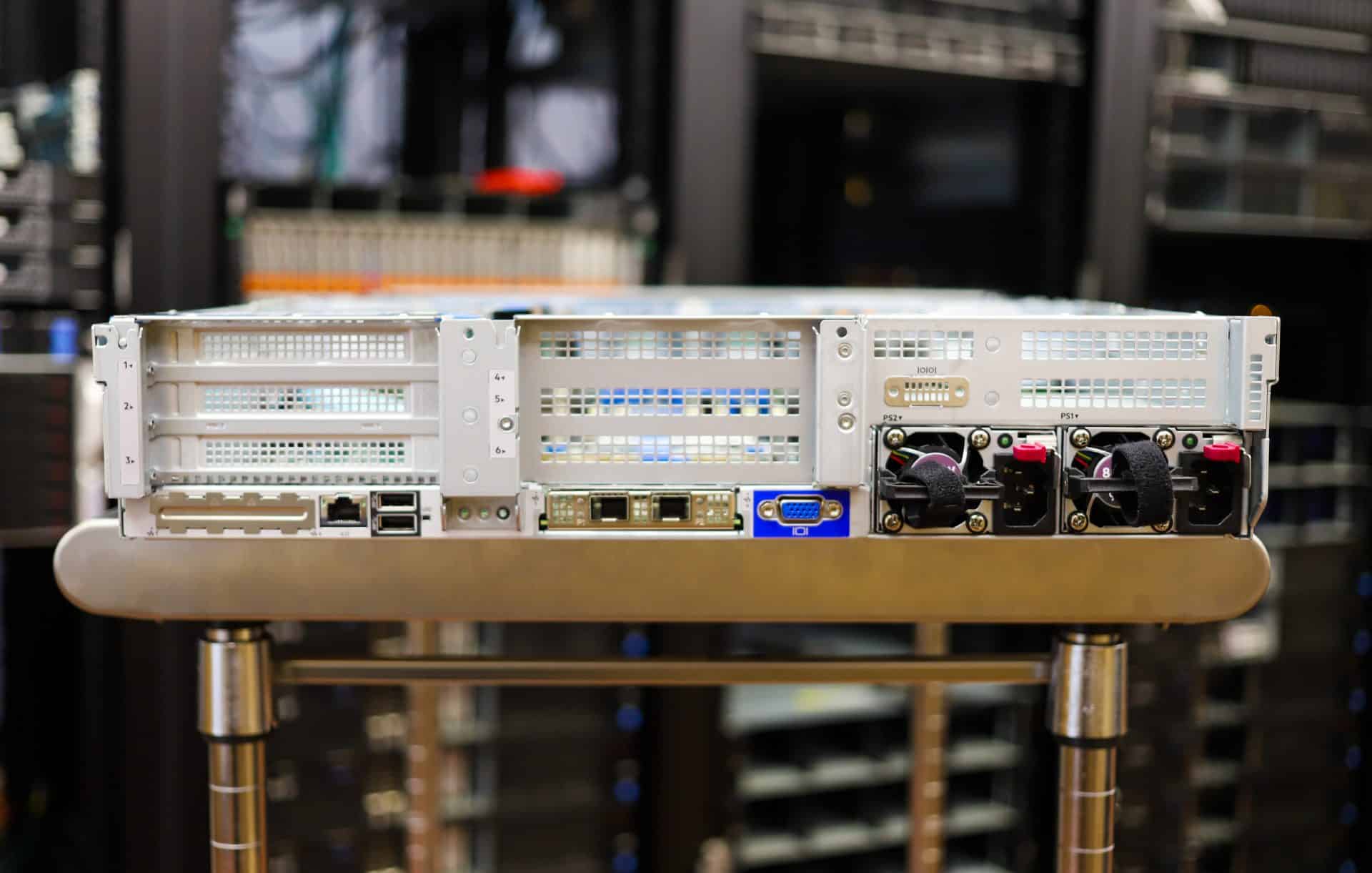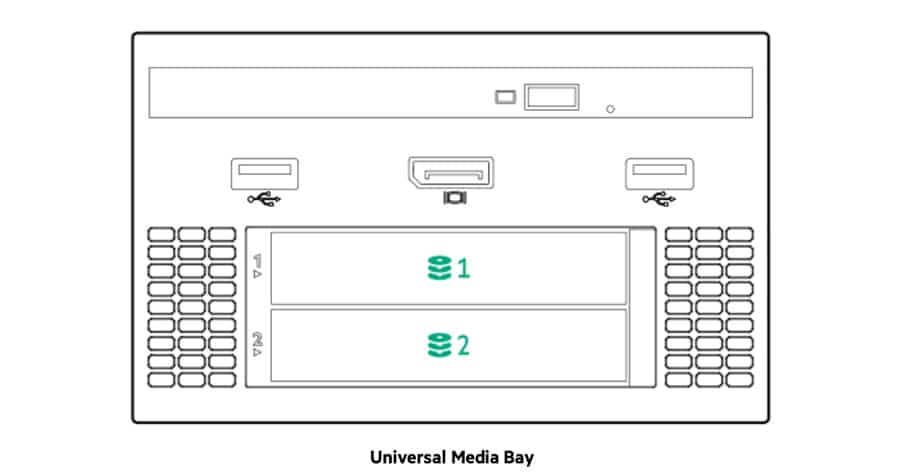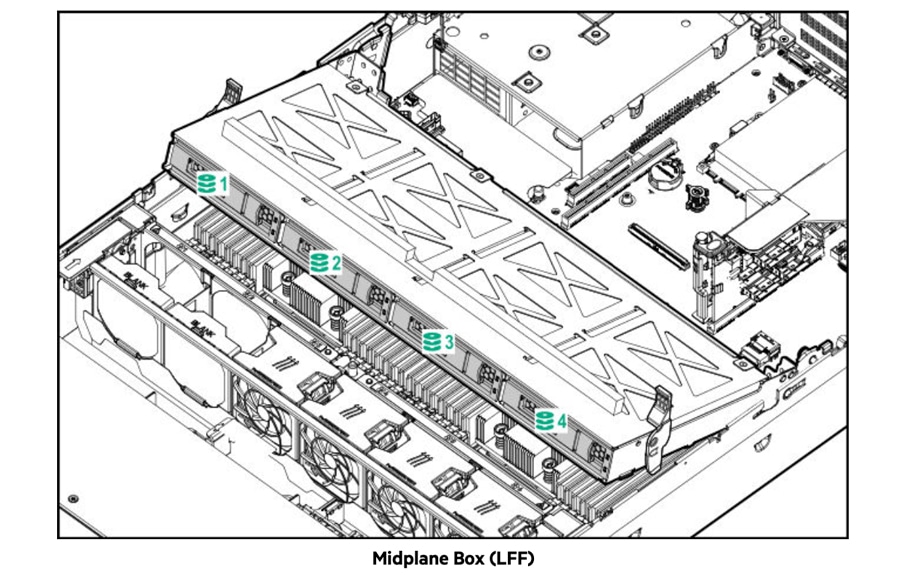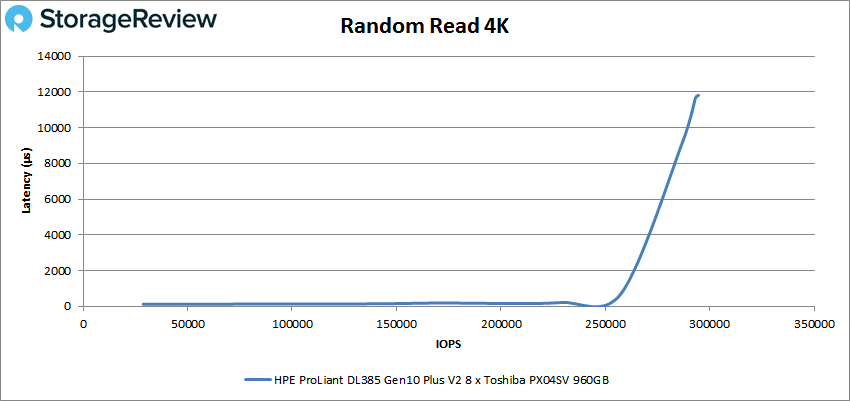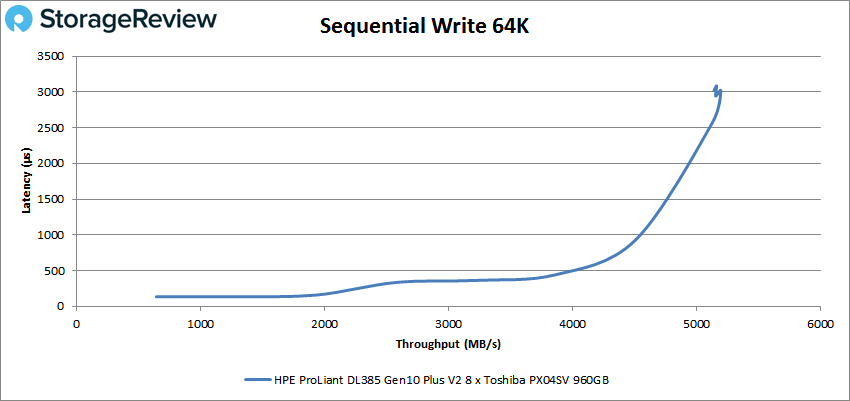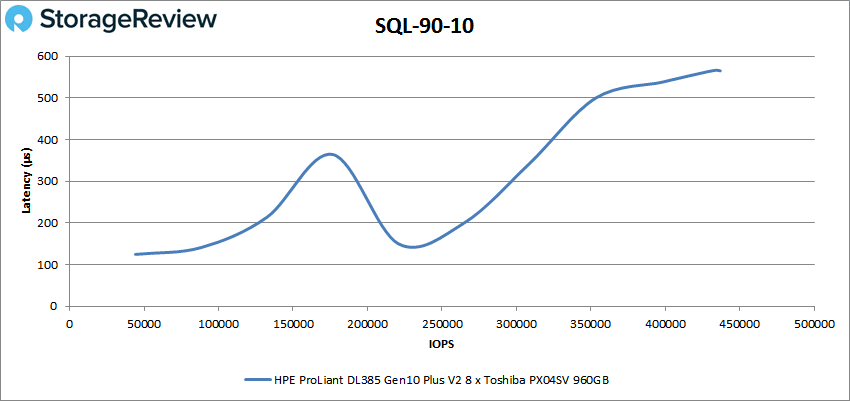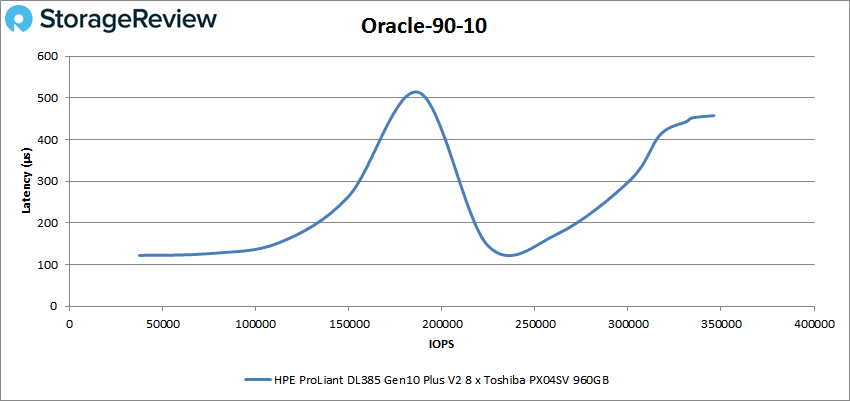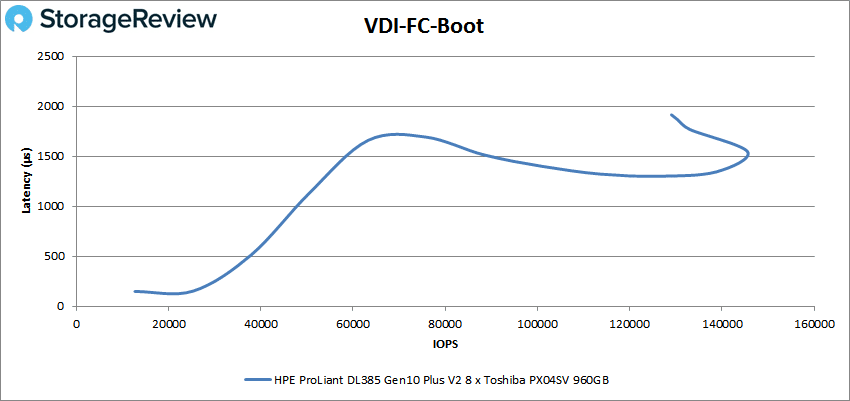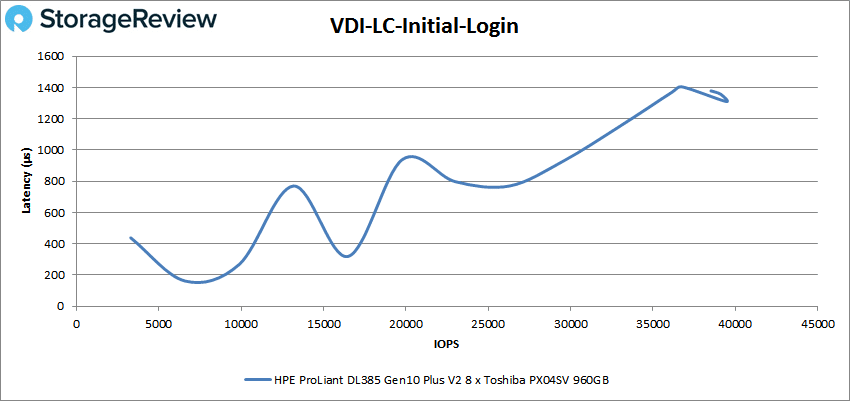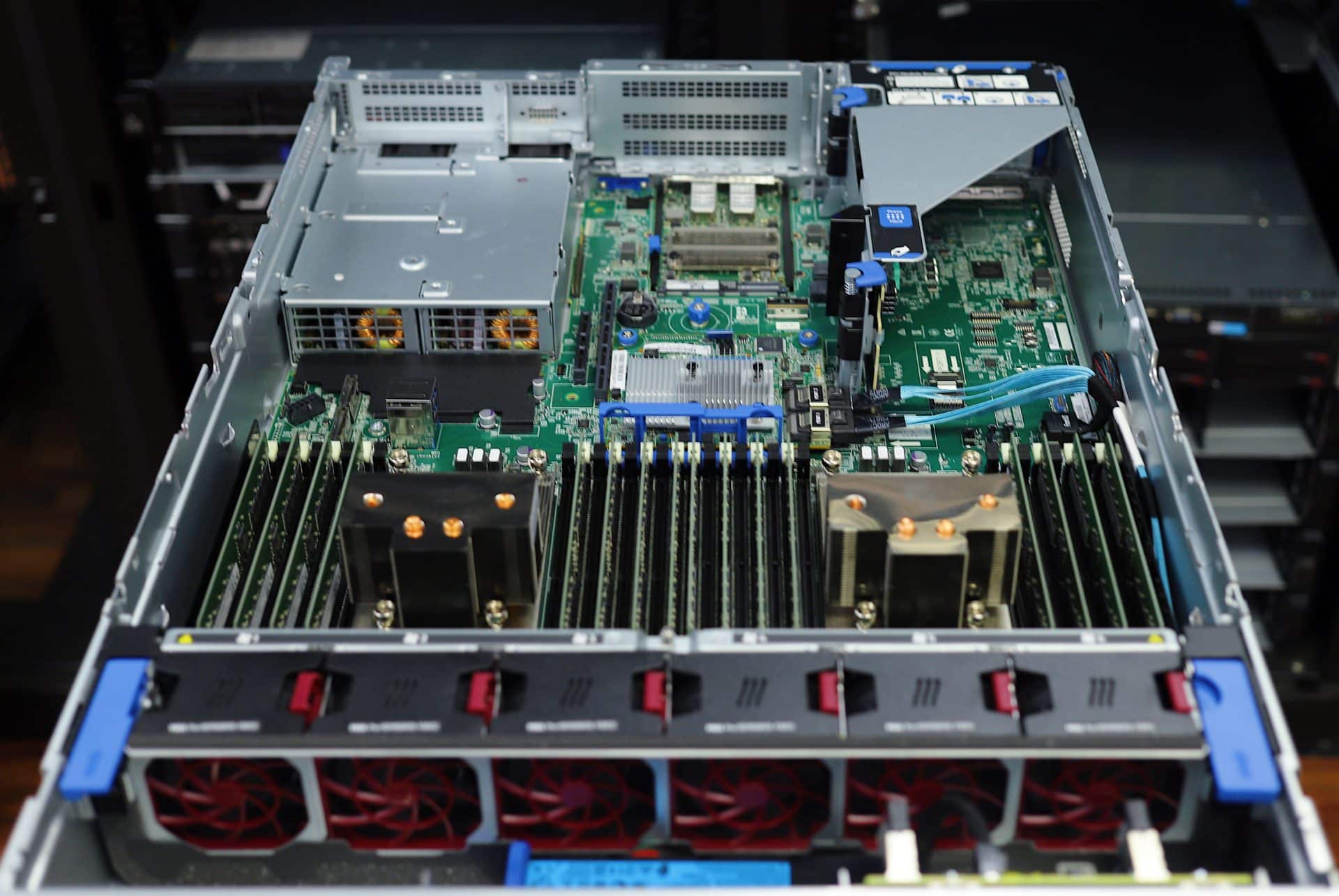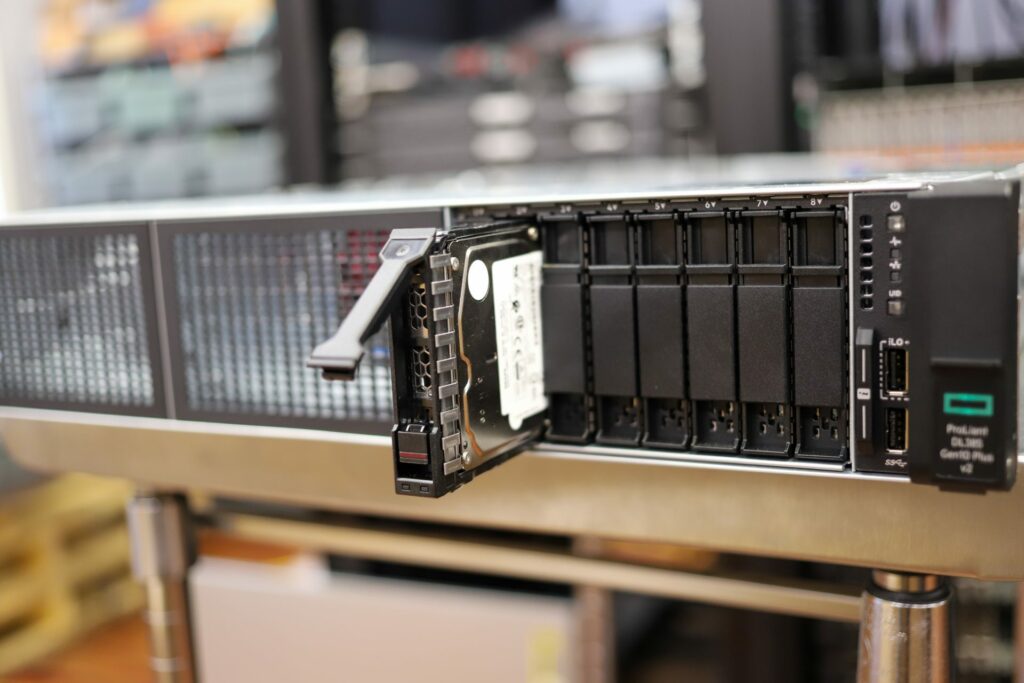Shortly after AMD launched its latest generation of AMD EPYC 7003 processors, HPE announced several updates for support of the new CPUs. Amid this announcement, the company announced the HPE ProLiant DL385 Gen10 Plus V2 Server. The server is a 2U, dual-socket system with the ability to have up to 128 cores and 8TB of RAM depending on how you configure it. Its 2U footprint gives it more room for GPUs as well, eight single wide or three double-wides.
Shortly after AMD launched its latest generation of AMD EPYC 7003 processors, HPE announced several updates for support of the new CPUs. Amid this announcement, the company announced the HPE ProLiant DL385 Gen10 Plus V2 Server. The server is a 2U, dual-socket system with the ability to have up to 128 cores and 8TB of RAM depending on how you configure it. Its 2U footprint gives it more room for GPUs as well, eight single wide or three double-wides.

What is the difference between the DL385 Gen10 Plus and V2?
An astute reader will see that sneaky V2 on the end of the server’s name. So what is different between this version and the first version. The first version was announced back in 2018 at Computex. While it too was a 2U, dual-processor it supports AMD EPYC 7002 or second-gen CPUs. Version one supports up to 4TB of RAM. So, the V2 gives users support for the latest 7003 CPUs, all the benefits that come with that, and twice the memory footprint.
Where does the HPE ProLiant DL385 Gen10 Plus V2 fit?
When the new CPUs were announced HPE announced four new server solutions on day one (plus three Apollo solutions and three Cray solutions). Currently, there are four servers that support the new AMD EPYC 7003’s including the HPE ProLiant DL325 Gen 10 Plus v2, HPE ProLiant DL345 Gen 10 Plus, HPE ProLiant DL365 Gen 10 Plus, and the HPE ProLiant DL385 Gen 10 Plus v2.
The DL385 sits on the higher end with the ability to add plenty of storage and GPU options. The two CPUs, more storage, and up to eight GPUs make it a better fit for AI, ML, and Big data Analytics.
As stated, the HPE ProLiant DL385 Gen10 Plus V2 can be equipped with two AMD EPYC 7003 CPUs. If one were to put in two EPYC 7713s that would give the server 128 cores. The server has 32 DIMM slots (16 per CPU) for a total of up to 8TB of 3200MHz of memory (256GB modules x 32 slots).
For storage, users can configure the server to have up to twenty-four, 2.5″ drive bays in the front. The server leverages HPE’s Tri-mode strong controller meaning that it supports NVMe/SAS/SATA drives. Being a current-generation AMD server means that it supports PCIe Gen4 storage as well.
Like the rest of the line, the DL385 offers high security, automation, and remote management through the support of HPE Integrated Lights-Out (iLO). And the new server is part of the company’s as-a-Service suite including in HPE GreenLake.
HPE ProLiant DL385 Gen10 Plus V2 Specifications
| Form Factor | 2U |
| CPU |
|
| Memory |
|
| Drive Supported |
|
| Storage Controller | HPE Smart Array SAS/SATA Controllers or Tri-Mode Controllers |
| Network Controller | Choice of optional OCP plus standup |
| Remote Management Software |
|
| Expansion Slots | 8 maximum |
| Weight | 33.25 lb (15.1 kg) |
| Dimensions | 3.44 x 17.54 x 29.5 in (8.73 x 44.54 x 74.9 cm) |
Design and Build
As stated, the HPE ProLiant DL385 Gen10 Plus V2 is a 2U server that looks more or less like the rest of the ProLiant line. Across the front are the drive bays (depending on configuration but users can have up to 24). On the right, there is the power button, health LED, NIC status light, ID button, iLO front service port, a USB 3.1 Gen1 port, and a serial label pull tag.
Flipping the server around to the rear we see that most of the device is dominated by expansion slots. On the right-bottom are the two PSUs. Going across the bottom from left to right is a dedicated iLO management port, two USB 3.1 Gen1 ports, ID LED, an OCP 3.0 slot, and a VGA connector.
Through a handy latch on top, anyone can easily pop the lid off. Looking inside, the first thing that jumps out is the two CPUs in the center surrounded by the memory. The six hot-swap fans run across the server near the front. In the middle behind the RAM is the HPE Flexible Smart Array Controller. If you opted for both CPUs, there is a second riser connection near the controller. Near the back are the PCIe and OCP risers.
HPE ProLiant DL385 Gen10 Plus V2 Storage Configs
Similar to the HPE ProLiant DL385 Gen10 Plus, there are several drive configuration options. Aside from the commonplace 24 SFF across the front, users can go with 12 LFF (for high-capacity HDDs). If capacity is a greater concern than storage performance this would be a good way to go.
Let’s say one needs both high capacity, but still needs some storage performance. Users can set up 8 LFF across the bottom with 2 SFF on one side and a universal media bay, with an optical drive, on the other side.
A universal media bay with two SFF slots can be added to one of the three boxes in the front with either more SSDs or blank spots left.
A midplane box can be added for 4 more LFF slots without taking up space in the front or rear.
The rear expansion can be used for storage if GPUs are a high priority with either LFF or SFF.
HPE ProLiant DL385 Gen10 Plus V2 Performance
It should be noted here that we received a pre-production unit. Also, the unit we have is limited to SAS storage, so this will look at how SAS performance and not quite have the whiz, bang, pow of our NVMe review.
HPE ProLiant DL385 Gen10 Plus V2 testing configuration:
- CPUs: 2 x 2GHz 7713 AMD (64-core, 256MB Cache)
- Memory: 16 x 16GB PC4 – 3200 DIMMs
- Array Controller: P408i with Mega Cell
- Drives: 8 x Toshiba PX04SV SSDs (JBOD configuration)
- PCI-e Riser: Primary Riser
- Power Supplies: 1x 800w
- OCP Nic: 10/25 GbE 2P SFP28 SCP3
VDBench Workload Analysis
When it comes to benchmarking storage arrays, application testing is best, and synthetic testing comes in second place. While not a perfect representation of actual workloads, synthetic tests do help to baseline storage devices with a repeatability factor that makes it easy to do apples-to-apples comparisons between competing solutions.
These workloads offer a range of different testing profiles ranging from “four corners” tests, common database transfer size tests, as well as trace, captures from different VDI environments. All of these tests leverage the common vdBench workload generator, with a scripting engine to automate and capture results over a large compute testing cluster. This allows us to repeat the same workloads across a wide range of storage devices, including flash arrays and individual storage devices.
Profiles:
- 4K Random Read: 100% Read, 128 threads, 0-120% iorate
- 4K Random Write: 100% Write, 128 threads, 0-120% iorate
- 64K Sequential Read: 100% Read, 32 threads, 0-120% iorate
- 64K Sequential Write: 100% Write, 16 threads, 0-120% iorate
- Synthetic Database: SQL and Oracle
- VDI Full Clone and Linked Clone Traces
Looking at random 4K read, the HPE ProLiant DL385 Gen10 Plus V2 started with under 1ms latency performance until about 250K IOPs and then saw a peak of 294,632 IOPS at a latency of 11.7ms.
With 4K random write, the server gave us a peak of 285,942 IOPS with a latency of 11.1ms but ran at sub-millisecond latency performance for a bulk of our testing.
Switching over to sequential, we take a look at our 64K workloads. Here the sever started with sub-millisecond latency until about 30K IOPS or 1.5GB/s it went on to peak at 109,109 IOPS or 6.8GB/s at a latency of 2.34ms.
For 64K write, the DL385 stayed under 1ms until about 72K IOPS or 4.5GB/s and went on to peak at 82,421 IOPS or 5.2GB/s at 3ms before dropping some.
Next up are our SQL workloads, SQL, SQL 90-10, and SQL 80-20. With SQL, the DL385 started with sub-millisecond latency, though it spiked up to about 1.4ms in the middle. The server peaked at 442,615 IOPS with a latency of 558µs.
SQL 90-10 saw performance below 1ms throughout. The DL385 peaked at 436,927 IOPS and a latency of 565µs.
In SQL 80-20 we again see sub-millisecond latency performance throughout with a peak of 424,769 IOPS with 576µs for latency.
Now we move on to our Oracle workloads, Oracle, Oracle 90-10, and Oracle 80-20. With Oracle, the HPE ProLiant DL385 Gen10 Plus V2 once again had latency under 1ms throughout. The server peaked at 407,185 IOPS and 607µs for latency.
Oracle 90-10 saw a peak of 346,160 IOPS at a latency of 458µs.
With Oracle 80-20, the DL385 stayed below 1ms and peaked at 358,309 IOPS with 464µs for latency.
Next, we switched over to our VDI clone test, Full and Linked. For VDI Full Clone (FC) Boot, the DL385 hit a peak of about 145K IOPS at 1.5ms before dropping off some.
In VDI FC Initial Login the server gave us a peak of 56,818 IOPS at 4ms for latency before dropping off a bit.
VDI FC Monday Login saw a peak performance of 54,363 IOPS at 2ms before a drop in performance and a small spike in latency.
Next, we look at VDI Linked Clone (LC) tests. Starting with boot, the server had sub-millisecond latency until about 60K IOPS and peaked at 102,355 IOPS at a latency of 1.07ms.
For VDI LC Initial Login the DL385 peaked at 39,450 IOPS at a latency of 1.3ms.
Finally, for VDI LC Monday Login we saw a peak of about 33K IOPS at 3.1ms before dropping off some.
Conclusion
The HPE ProLiant DL385 Gen10 Plus V2 is a 2U server that leverages the AMD EPYC 7003 processors. This second version (V2) comes with the benefits of the latest CPUs as well as twice the RAM. The DL385 sits on the higher end of the scale of the newer EPYC-based servers with lots of storage and GPU options. The server can support up to 128 cores, up to 8TB of memory, up to 32 bays for storage (though enough options to make for both a high capacity and high-performance option), and up to eight GPUs, probably not all at once. This makes the server a good fit for AI, ML, and Big Data Analytics use cases.
We tested a pre-production model, so we didn’t get the most high-performant options. In fact, we are using SAS drives here instead of the NVMe drive we typically test in the higher-end servers. That’s ok because not everyone needs the fastest storage in their server. Instead, we use our VDBench to show what SAS-based storage is capable of in the DL385.
Highlights include peak performances of 294K IOPS in 4K read, 286K IOPS in 4K write, 6.8GB/s in 64K read, and 5.2GB/s in 64K write. In our SQL workloads we saw peaks of 443K IOPS, 437K IOPS in SQL 90-10, and 425K IOPS in SQL 80-20 all with sub-millisecond latency throughout. In Oracle we saw peaks of 407K IOPS, 346K IOPS in Oracle 90-10, and 358K IOPS in Oracle 80-20, again all with latency under 1ms.
Next up we looked at our VDI Clone tests, both Full and Linked. In VDI Full Clone we saw peaks of 145K IOPS in boot, 57K IOPS in Initial Login, and 54K IOPS in Monday Login. For VDI Linked Clone we saw peaks of 102K IOPS in boot, 39K IOPS in Initial Login, and 33K IOPS in Monday Login.
The HPE ProLiant DL385 Gen10 Plus V2 has the potential to be outfitted with very high-performance CPUs and a ton of RAM. On top of that, there are oodles of storage configurations and enough room for a slew of GPUs. This top-end server has lots of flexibility and a lot to love.
Engage with StorageReview
Newsletter | YouTube | LinkedIn | Instagram | Twitter | Facebook | TikTok | RSS Feed


